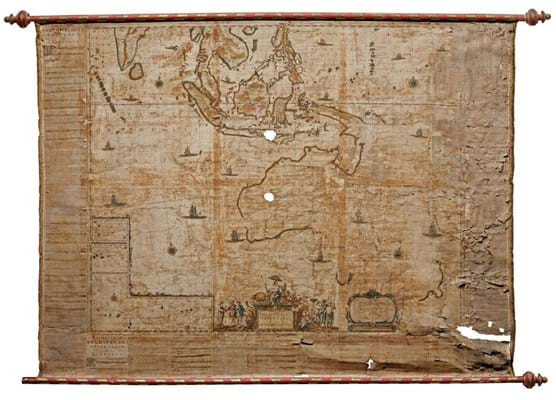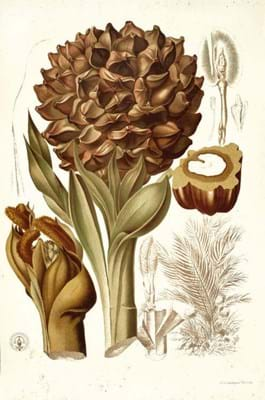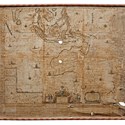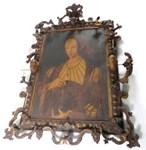Archipelagus Orientalis Asiaticus… is described in Gunter Schilder’s cartographic reference work of 1976, Australia Unveiled…, as “possibly the best general map of Dutch sea power executed in the 17th century…”
Blaeu atlases and wall-maps often served as official gifts from the Dutch Republic to foreign dignitaries.
The British Library boasts the ‘Klencke Atlas’, a remarkable assemblage of 42 large-scale linen-backed wall-maps (mostly by the Blaeu family) that in 1660 was gifted to Charles II by Dutch merchants to mark his restoration to the English throne.
The map offered for sale by Sotheby’s (25/20/12.5% buyer’s premium) on May 9 – complete with its original wooden rods for display – had been recently discovered in Italy.
It is discoloured, holed and subject to other damage that has resulted in losses to both the map itself and the side and lower text panels.
For all that, it is wholly unrestored and possibly one of only two surviving copies of the map in this state – the other being in Berlin’s Deutsche Staatsbibliothek.
The copy in the ‘Klencke Atlas’, another in the Rostock University Library and a copy acquired by The National Library of Australia in a Swedish auction all appear to be slightly later printings.
This rare survivor, measuring 3ft 10in x 5ft 2in (1.17 x 1.6m), was valued at £200,000-250,000 and sold at the low estimate.
A second Blaeu map offered, which would again seem to have made no previous appearance in auction or dealers’ catalogues, was a copy of Asiae descriptio novissima.
Similar in format and size, and slightly better preserved, it carried an estimate of £60,000-80,000 and sold at £70,000.
Speed stopper
Other lots with high hopes failed to sell. A 1676 edition of Speed’s Theatre of the Empire of Great Britain… [and] Prospect of the Most Famous Parts of the World would have set a record if it had achieved even the low estimate £100,000.
In the Far Eastern section of the sale, two early 19th century woodblock maps of the Chinese empire and a monumental manuscript example of c.1691-1711 were all bought in against estimates of £100,000-120,000.
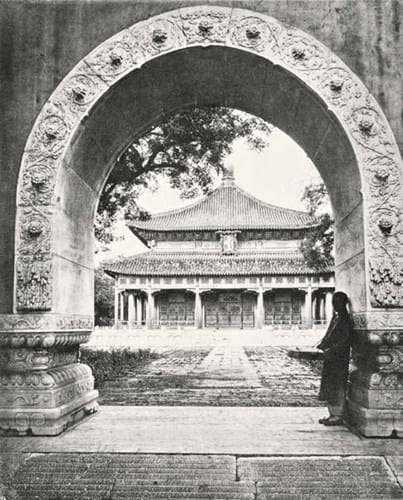
One of the 200 photographs that make up John Thomson’s Illustrations of China and its Peoples of 1873-74. Sold for a record £75,000.
On the other hand, an 1873-74 first edition of John Thomson’s Illustrations of China and its Peoples almost doubled the previous auction best in selling at £75,000. The work’s 96 plates incorporate a series of 200 photographs with letterpress descriptions of the places and peoples represented.
Arabian horse sense
The two most successful Middle Eastern lots were very different.
Bid to £30,000 was a complete set of 18 tinted litho plates of Arabian horses from the Royal Wurttemberg stud farm, executed by Ekeman Alleson after Johann Rudolph Kuntz and published 1823-24.
Sold at £20,000 was an ivory silk thawb, or under-robe, that TE Lawrence gave to Charles Henry Hutchins, a childhood friend who lived next door to Lawrence’s family home and also attended Oxford High School.
When Lawrence returned to England after taking part in the Arab revolt against the Ottoman empire he brought with him quite a wardrobe of Arab dress and made many such gifts to family and friends.
A small group of natural history lots with which the sale opened saw £14,000 paid for a mixed edition set of Eleazar Albin’s pioneering Natural History of Birds.
The first two volumes were firsts of 1731-34 and the third a second edition of 1740. Containing 306 coloured engraved plates after Albin’s own watercolours, this copy had a number of faults of condition but it did get the sale under way with a record bid.
Sold for £20,000 was a cased collection of 389 chromolitho proof plates – 11 of them duplicates, and many before the descriptive titles – for the 1877-83 deluxe edition of Francisco Manuel Blanco’s Flora de Filipinas.
The original, uncoloured issue was printed in Manila but at least part of this version was probably completed in Barcelona.
It is thought that many of the coloured copies were lost during the fighting that accompanied the liberation of Manila from Japanese occupation in 1945.


